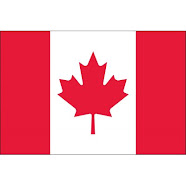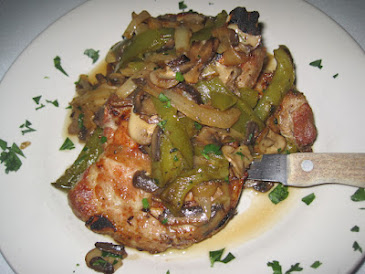BRITS LOVE THEIR NATIONAL TEA BREW...and P.S. So Do Americans Says Peachy Deegan Even If Sometimes It Can Be Fun to Dump In Boston Harbor
PREVIOUSLY ON WHOM YOU KNOW:
#RoyalPeachy @ukinnewyork @ewadesmith @Tusnik #UKinUSA #EmmaWadeSmithOBE #BritishConsulateGeneral #NewYork British Consulate General New York Celebrates the Coronation of King Charles III
...PLUS GET EXCITED FOR A BRAND NEW MOVER AND SHAKER SOON WHO AGAIN WILL PROVE THAT THE ENGLISH ARE AMONG THE BEST THINGS THAT CONTINUE TO HAPPEN TO AMERICA
(AND OBVIOUSLY, THEY STARTED IT!)
***
But Many Get A Fail For Barking Up The Wrong 'Tea' Says A New Tea Census Research Study And Report Launched To Mark International Tea Day On 21st May
Most Brits are pretty clued up on their tea facts, reveals a new Tea Census Study1 and Report – 'From Plant to Cup: There's more to a cup of tea than meets the eye' – from the UK Tea & Infusions Association (UKTIA).
Nearly seven in 10 Brits know that tea is made from the leaves of the tea plant, and most can name several tea-producing countries. More than six in 10 appreciate that tea leaves have to go through drying, rolling and chopping before ending up in our cup. A brainy half correctly say that tea is tested for quality throughout its production.
But when it comes to certain facts, Britain's army of tea drinkers needs to go back to the classroom. Chief Executive of the UK Tea & Infusions Association (UKTIA), Dr Sharon Hall, says: "As a nation of tea lovers, we know plenty of stuff about tea such as where it comes from, how it's made and the benefits it brings to our day."
"But we are still barking up the wrong 'tea' on key facts such as the differences between green and black teas. More than half (55%) of the nation claim wrongly they come from different plants and four in 10 (43%) believe green tea is picked in summer while black tea is picked in winter."
"A third (32%) reckon green tea is only made in Japan, while a similar group (33%) think that green tea looks that way because it contains a colouring."
"Even though most folk are on the ball about their national tea brew, a minority still think that regular black tea is made from fruit, vegetables, fungus, bark or roots, or even that it comes from a laboratory – which is all nonsense."
The new UKTIA report – 'From Plant to Cup: There's more to a cup of tea than meets the eye' – also looked in detail at the care taken at each step of the process from tea plant to tea pot. Amazing facts from this report include:Our love of tea started when Charles II married Portuguese princess and tea lover, Catherine of Braganza.
The first shipment of tea from China arrived in 1664 to quench the thirst of wealthy Londoners.
Today, we import around 100,000 metric tons of tea each year to provide for the one hundred million cups a day we drink in the UK.
Tea is grown in more than 60 countries around the world; some is even grown in the UK and on the Channel Island of Jersey.
It can take 15 years to get from tea plant seedling to actually harvesting the leaves for a cuppa.
Huge driers – a bit like hairdryers inside tunnels – are used to get the moisture content of tea leaves down to 3-4%. This is crucial for keeping tea fresh in your kitchen cupboard.
Dr Sharon Hall adds: "Many of us take tea for granted but there really is an amazing back story to how this humble leaf ends up in our teabags or tea pots."
"The type of tea enjoyed most in the UK is strong and robust, typically drunk with milk and brewed using a teabag. To create this flavour profile, tea leaves have to be cut more finely using something resembling a mincing machine called a CTC (cut, tear, curl)."
"Tea tasting is also vital to produce the 'British taste'. Just like for wine, the expert tea tasters will slurp the brew to bring in air, swish it around the mouth, and spit it out to evaluate the flavour. It's a very strict process."
"In fact, there are agreed standards on tasting methods, terminology and even the crockery used to make the brew to ensure everyone around the world is assessing quality the same way."
"As our report shows, tea production is a highly complex process but thankfully all we need to do is stick on the kettle, boiling just the water you need, grab a teabag, pour the water and sit back to enjoy a lovely, warming cuppa."
How to make a perfect brew
Want to know what makes the best brew? UKTIA's Dr Sharon Hall has put together a few simple steps to help ensure you make the best brew this International Tea Day and beyond:Use a good quality teabag or loose-leaf tea and store your tea in a cool, dry place.
Avoid storing tea next to strongly flavoured or perfumed foods.
Always use freshly drawn water and consider using a water filter. Dr Sharon Hall explains, "In some parts of the country the tap water is hard or soft and this can affect the taste of the tea."
Use one teabag or one rounded teaspoon of loose tea for each cup or mug.
Smart boil. Using your mug, measure out just the water you need for one or two cuppas and only boil that.
Dr Sharon Hall notes; "This will help save on energy costs and will ensure a good flavour tea which develops best when made with freshly boiled water. The lack of oxygen bubbles in re-boiled water can give the tea a flat taste."
Allow the tea to brew for the recommended time before pouring. Always read the instructions on the pack and if you're brewing tea from a bag in a mug, adding milk last is best.
Most black teas should be brewed for three to four minutes, while Lapsang Souchong black tea tastes best after four to five minutes. Brew green tea for three to four minutes and oolong tea for three to five minutes, depending on your strength preference.
Remove the bag after brewing, before adding the milk.
Put your feet up, relax and enjoy.
To discover more about tea, see: https://www.tea.co.uk/
The UK TEA & INFUSIONS ASSOCIATION is the trade association for the UK tea industry.
1Independent poll of 1011 UK-based adults, Spring 2023































































































